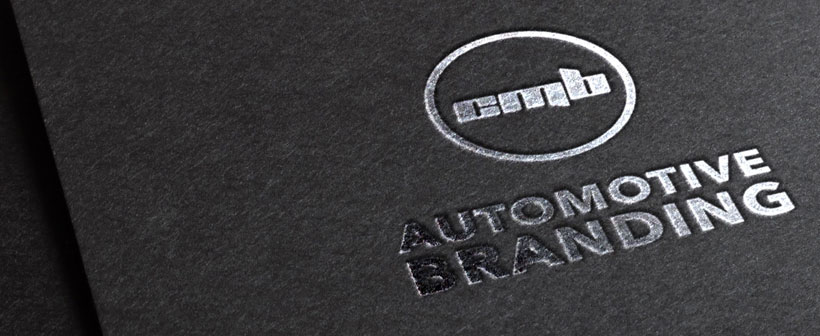Automotive Brand Development
How to help your automotive company benefit from a powerful brand
We hear a lot of talk today about brands and branding. Many automotive companies are keen to have or become a powerful brand but there seems to be some confusion about what a brand actually is, what makes a great brand and how they are created. Some believe it entails nothing more than creating a new logo.
In reality, automotive brands are created for reasons far more fundamental to business success. A powerful brand and an effective brand strategy will give you a major edge in increasingly competitive markets. In short, your brand can be crucial to your business success.
Here’s some basic thinking about automotive brand development that should inform any approach to brand building and strategy.
- Brands are really about perceptions and shaping perception of your firm
- Brands exist for only one reason: to create competitive advantage for your products and services
- Competing in automotive markets on a platform of Brand Preference is more profitable and more sustainable than competing on price
- To be effective, an automotive brand must develop and sustain a Brand Positioning that is DIFFERENT and/or BETTER than its competition.
“Business leaders rely on brands, as well they should. A recent study demonstrated that intangible assets now contribute 84% of the market value of S&P 500 businesses and on average, the brand contributes 25% of that”. *
The concept of the ‘brand’ still permeates boardrooms across the globe. 83% of business leaders believe that brands continually deliver to the bottom line. *
* Source: The Board-Brand Rift Report, by the Financial Times and the IPA
What is a brand?
Simply put, your brand is the sum-total of how your customers see, talk about, experience and perceive your firm.
Having a powerful brand and the practice of branding is fundamental to business success. Branding is the practice of creating competitive advantage for your business and creating a brand positioning that is different to and better than the competition. It is creating the perception and shaping the way YOU want the world to see your business. Brands are developed over the long-term and they make significant contributions to the company bottom line. Ultimately, branding is about creating and maintaining relevance.
Even though brands are intangible assets they are still critical to business success. More than just a logo or a product name, brands come alive in our minds and, more to the point, in the minds of our customers, our employees, investors, the media and anyone else who comes in to contact with them.
Your brand is the way your company is seen and perceived. This perception of your brand shapes belief and customer behaviour and how they engage with your brand.
The real power of branding lies in one significant principal of human psychology… perceptions can be shaped. Because perceptions can be shaped, good branding effectively dictates customer reality and, in turn, influences purchasing behaviour.
How we shape the outside world’s view of our brand, their feelings towards it and their emotional connections is the practice of branding or brand development.
So what exactly do we mean by Automotive Brand Development?
Simply put, your brand is your promise to your customers. It tells them what they can expect from your products and services. It gives them an immediate ‘feel’ – the level of quality, reliability, expense, style, trust, expertise, service and even emotional connection – what ever it is you try to inspire them to feel about your company. Automotive Brand Development is the process of implementing a brand strategy, defining your key messages, improving and building your brand to command a better position in the automotive market and increase brand equity.
Brand Positioning
But you can’t be all-things to all-people. Are you innovative, challenging and edgy or are you reliable and experienced? Does your brand represent high-cost, high quality or low-cost, high-value? Your brand builds the basis for the market’s perception of where you stand. Establishing the area of the market you want your brand to sit within and adjusting your brand communications to target this area is called Brand Positioning and is one of the foundations of automotive brand development (building a brand).
Brand Equity
Strong, consistent representation across all communications and touch-points with your company (from your website to your business cards and even how you answer the phone) builds Brand Equity. Brand Equity is the added value of your products and services that allows you to charge more or sell more than the competition. Often seen as the ability to charge more because of the brand (for example, a BMW usually costs more than an equivalent model Hyundai), this isn’t always the case. A brand positioning of low-cost, high-value, may allow a company to sell at a lower cost but take a larger slice of the available market share than a brand with perceived higher brand equity (i.e. Ford vs Bentley). Strong Brand Positioning and strong Brand Equity will help a company’s business performance.
Brand Equity is created through strong brand foundations of Brand Awareness, the Perceived Quality of your products/services/company, Brand Associations, Brand Loyalty and Brand Identity (as well as any other additional brand assets).

Brand Associations
A brand’s intrinsic value often comes from emotional attachments with the brand or associations with the brand. For example, associations (through sponsorships, advertising and celebrity brand ambassadors) can transfer the emotional attachments with a sports team to the product. It isn’t just the product’s features that will help it to sell. This is why we often see automotive suppliers and OEMs sponsoring sports teams, movies and culturally popular celebrities or events.
OK, we’ve established your automotive brand is important. How do you go about developing a strong brand and making it work for you?
In simplistic terms, the process of Building a Brand should follow a simple 4-step process:
- Identify the Opportunity – begin with a rigorous analysis of your product, company capabilities, consumers and competitors. Understand the market – thoroughly.
- Define the Brand – Where do we fit in the market and what does our brand represent? How do we define and describe the Vision, Values, Positioning and Proposition for the Brand. A brand proposition, in short, is a statement that identifies the benefits the customer derives from your brand.
Brand Propositions must be:
- Relevant
- Credible
- Distinctive
- Defined
- Competitive
- Consistent
- Articulate the Brand – the next task is to demonstrate creatively how the brand is brought to life. This involves your brand identity (name, logo, marque, strap lines, colours, fonts and so on), key messages, statements, look and feel.
- Communicate the Brand – how do we communicate the brand (because it doesn’t become a brand until it is communicated) to our customers, stakeholders and employees. Employees need to have an understanding of the Values, Vision and Ambition of the Brand. Make sure your brand is consistently integrated across all touch-points with your customers. This includes product packaging, website, advertising, sponsorships, brochures and literature, company clothing, retail outlets, signage – any point where your company comes in to contact with your customers.
If you don’t effectively communicate your brand, the external world will do it for you – probably inaccurately or in a way you don’t control. It’s important to remember, your brand is not always what you think it is – it’s also what your customers think it is. It is up to you to control how the market perceives your brand.
Truth and Consistency
Remember to be true to your brand. Don’t set it up to be something you can’t achieve or don’t believe in. If you can’t back up your brand promise and positioning, customers won’t return and your reputation can suffer – sometimes irrecoverably.
Over all, be consistent with your brand and how it is applied. Define your key messages, your identity, tone of voice and stay consistent with it. Enforce your brand across all your communications and if you have dealers and distributors or resellers, make sure they understand the importance of using it correctly. To help with this, it is often advisable to create a brand standards document. This can be a simple task that outlines how you wish the brand to be used. Consistency builds trust, improves brand equity and ultimately will help steer your brand to greater success.
If you ‘re looking to build your automotive brand or improve brand performance, CMB can help you take this journey and provide you with the expertise and support you may require for all aspects of automotive brand development. For a truly world-class automotive brand that builds success for your business, contact CMB today
You may also like:
Discover why now might be the right time to rebrand your automotive business
Massive auto industry disruption and a drive towards electric vehicles has made many automotive brands feel out of touch and irrelevant. Rebranding offers a solution, ensuring long term relevance in the fast changing auto industry.






